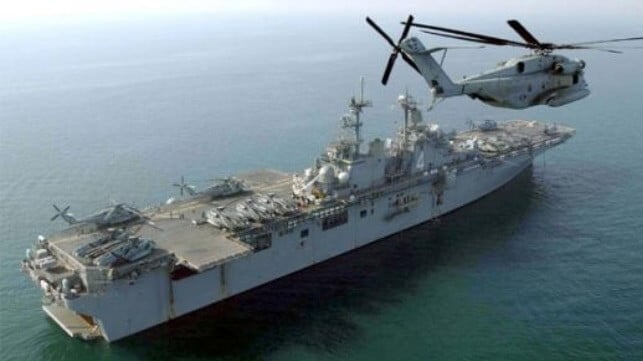USS Boxer's Breakdown May Take Two Months to Fix Without Drydock

The U.S. Navy has decided to repair a damaged rudder aboard the amphib USS Boxer using divers in the water, a process that will take up to two months, officials told USNI News on Tuesday. Boxer was forced to return to port in San Diego earlier this month, but there are no open drydocks available to help her get back under way.
Getting Boxer into a drydock locally would mean refloating and removing another ship first. Instead of disrupting a second vessel's overhaul, or towing Boxer to another port, Navy officials made the decision to go with an in-water repair, according to USNI. In-water repair techniques are established as a specialized option for rudder repairs on merchant ships, though are less common than drydocking.
The breakdown adds months to Boxer's long delay in returning to service; the vessel has been in various stages of overhaul since 2022, and repeated setbacks have prevented it from deploying on time. The cause of the rudder failure is still under investigation, and may not be related to other problems in Boxer's engineering department.
The list of issues is long enough that it has drawn the attention of the Navy's top leadership. In November 2022, two of the forced draft blowers on USS Boxer's steam plant failed repeatedly, a breakdown that the command attributed to improper contractor repairs. In May 2023, Boxer experienced an unspecified incident during a boiler light-off, chalked up to complacency and noncompliance. In mid-July 2023, Boxer's engineering team spun the main gearbox for two hours without lubrication, and only notified the commanding officer of this potentially damaging decision the next day.
Navy officials attributed the problems to "general complacency" among the crew, but a shortage of experienced personnel who know how to work on steam technology is a contributing factor. Boxer and her six sister ships are among the last non-nuclear, steam-powered vessels in U.S. service. Most of the others are sealift ships that are kept in long-term layup, and these civilian-crewed vessels face similar skill shortages.
